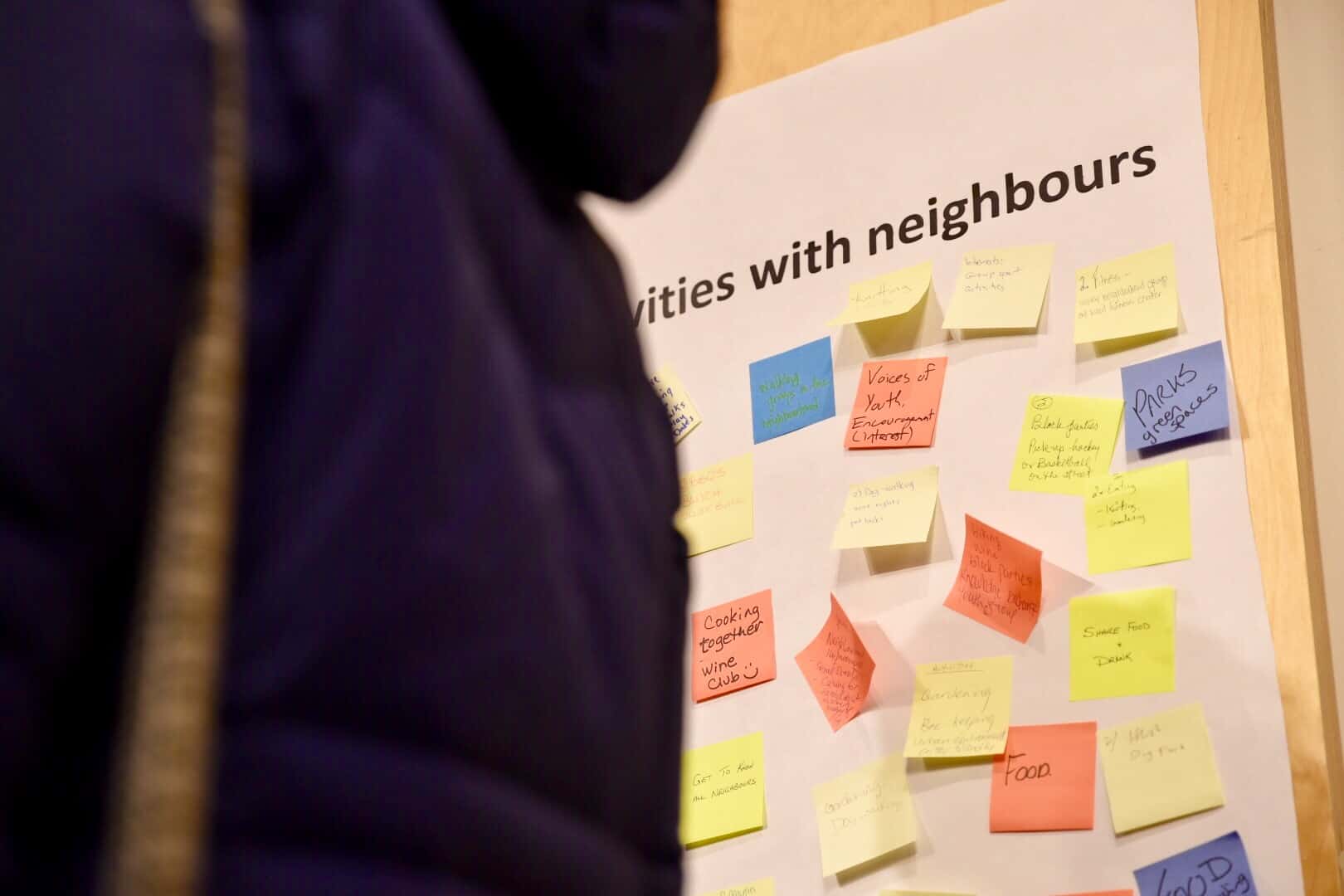Developing Abundant Communities
In a world of increasing social isolation, neighbours can be a great asset for social support, resources, help, and safety. A book called The Abundant Community by John McKnight and Peter Block champions collective efficacy to create more capable and effective communities.
In the book, McKnight and Block explain that when communities become organized and engaged, many of the goods and services we normally outsource are often available within our own communities. Rather than becoming “clients and consumers” we could become “citizens and neighbours.”
Howard Lawrence, co-founder of Abundant Community Edmonton (ACE) believes in the untapped assets communities hold. After reading the book, he said he knew the Asset-Based Community Development (ABCD) framework could be used to benefit Edmonton’s communities, but with some adjustments.
“The principles of the book say that you need to catalog the personal assets—so human assets—the group assets and the institutional assets of the neighbourhood,” Lawrence said. “Our approach is the book made practical.”

The framework utilizes block connectors that go door-to-door asking each resident about their interests, needs, and skills, which is then compiled along with their neighbours’ data to develop a better understanding of the community as a whole.
Karen Mykietka, past president of the Alberta Avenue Community League, introduced ACE to the 80-block neighbourhood a few years ago.
“It’s a bottom-up approach instead of top down. You start by talking to people, see who’s interested in what, and help connect people in the neighbourhood. Maybe they start an informal group or a formal program or maybe they just get comfortable talking to their neighbours ,” said Mykietka.
The city held an event last month celebrating the volunteers, support teams, and community leagues involved in ACE since its introduction to Edmonton in 2013. There are currently 25 participating communities and over 300 block connectors across the city, making Edmonton the leader across North American neighbourhoods using the asset-based approach—and this might just be the beginning. Anne Harvey, ACE project manager, said there are 45 more communities interested.
Lenn Wheatley works as a neighbourhood connector in Alberta Avenue and hopes that by the end of the summer, all the neighbourhood’s residents will be facilitated in meeting their neighbours to the left and right, maybe for the first time.
“There is a lot of research out there right now that shows that if you increase your social capital…then you start to realize benefits,” Harvey said. “Like increase in safety, decrease in social isolation, increased opportunity for recreation, increase in pride, in the environment—you even start to see improvements in local economy.”
What this all boils down to, she said, is an increase in relationships at the block-to-block level.
Harvey added, “Right now, there is a need for more connection and more neighbourly-ness. So this promotes both of those at a scale that’s manageable. If we think about big picture questions like safety, social isolation, poverty, racism, discrimination—all of these things are huge, and if we think about them even from a city scale, it can be overwhelming. But if we bring the scale down to the neighbourhood, and even further down to the block…things become so much more achievable and more meaningful.”
Together, these pockets of community interest could translate into a national momentum that fights social isolation locally and nationally, while also creating stronger communities.
Visit the ACE webpage or call 311 to discover if your neighborhood is involved and find resources.
Header image: Communities across North America have adopted the Abundant Community approach. | Shayne Woodsmith







